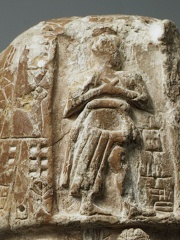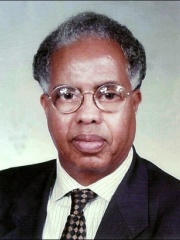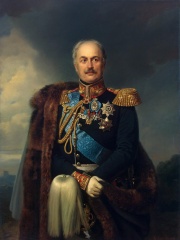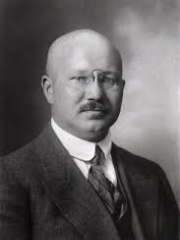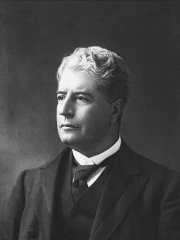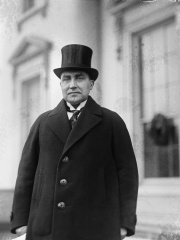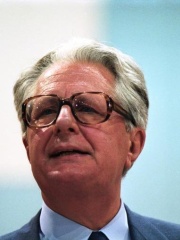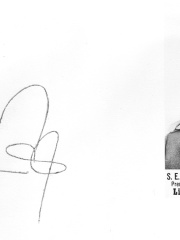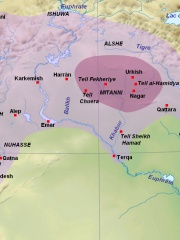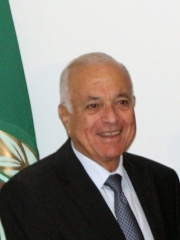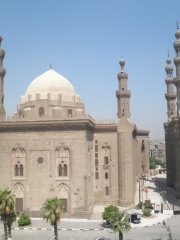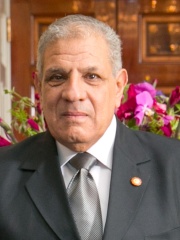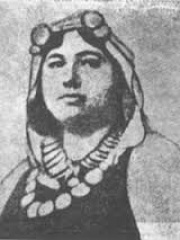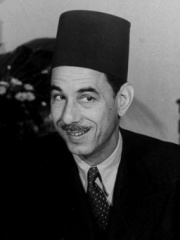POLITICIAN
Henuttaneb
1350 BC - Today

 Henuttaneb
Henuttaneb
Henuttaneb was an Ancient Egyptian princess of the Eighteenth Dynasty and daughter of pharaoh Amenhotep III and his Great Royal Wife, Queen Tiye. Read more on Wikipedia
Her biography is available in 18 different languages on Wikipedia (up from 16 in 2024). Henuttaneb is the 11,196th most popular politician (down from 6,391st in 2024), the 396th most popular biography from Egypt (down from 282nd in 2019) and the 179th most popular Egyptian Politician.
Memorability Metrics
Page views of Henuttaneb by language
Among POLITICIANS
Among politicians, Henuttaneb ranks 11,197 out of 19,576. Before her are Aga of Kish, Nur Hassan Hussein, Iddin-Dagan, Francesc Pi i Margall, Pavel Kiselyov, Otto Strandman, and Zera Yacob Amha Selassie. After her are Edmund Barton, Mawdud of Ghazni, Ants Piip, Hans-Jochen Vogel, and Michel Micombero.
Most Popular Politicians in Wikipedia
Go to all RankingsAga of Kish
HPI: 60.14
Rank: 11,196
Nur Hassan Hussein
1937 - 2020
HPI: 60.14
Rank: 11,197
Iddin-Dagan
2000 BC - 1954 BC
HPI: 60.14
Rank: 11,198
Francesc Pi i Margall
1824 - 1901
HPI: 60.13
Rank: 11,199
Pavel Kiselyov
1788 - 1872
HPI: 60.13
Rank: 11,200
Otto Strandman
1875 - 1941
HPI: 60.13
Rank: 11,201
Zera Yacob Amha Selassie
1953 - Present
HPI: 60.13
Rank: 11,202
Henuttaneb
1350 BC - Present
HPI: 60.13
Rank: 11,203
Edmund Barton
1849 - 1920
HPI: 60.13
Rank: 11,204
Mawdud of Ghazni
1012 - Present
HPI: 60.13
Rank: 11,205
Ants Piip
1884 - 1942
HPI: 60.13
Rank: 11,206
Hans-Jochen Vogel
1926 - 2020
HPI: 60.13
Rank: 11,207
Michel Micombero
1940 - 1983
HPI: 60.13
Rank: 11,208
Contemporaries
Among people born in 1350 BC, Henuttaneb ranks 7. Before her are Tudhaliya III, Ḫattušili II, Tudhaliya II, Iset, Nebetah, and Shuttarna II. After her are Zannanza, Shattuara, Ankhesenpaaten Tasherit, Shuttarna III, and Artashumara.
Others Born in 1350 BC
Go to all RankingsTudhaliya III
POLITICIAN
1350 BC - 1350 BC
HPI: 65.14
Rank: 1
Ḫattušili II
POLITICIAN
1350 BC - 1400 BC
HPI: 64.75
Rank: 2
Tudhaliya II
POLITICIAN
1350 BC - 1355 BC
HPI: 62.12
Rank: 3
Iset
POLITICIAN
1350 BC - Present
HPI: 61.42
Rank: 4
Nebetah
POLITICIAN
1350 BC - Present
HPI: 60.76
Rank: 5
Shuttarna II
POLITICIAN
1350 BC - 1375
HPI: 60.75
Rank: 6
Henuttaneb
POLITICIAN
1350 BC - Present
HPI: 60.13
Rank: 7
Zannanza
DIPLOMAT
1350 BC - 1320 BC
HPI: 58.91
Rank: 8
Shattuara
POLITICIAN
1350 BC - 1300 BC
HPI: 58.51
Rank: 9
Ankhesenpaaten Tasherit
POLITICIAN
1350 BC - Present
HPI: 57.81
Rank: 10
Shuttarna III
POLITICIAN
1350 BC - 1400 BC
HPI: 55.57
Rank: 11
Artashumara
POLITICIAN
1350 BC - Present
HPI: 54.75
Rank: 12
In Egypt
Among people born in Egypt, Henuttaneb ranks 396 out of 642. Before her are Stéphanos II Ghattas (1920), Hypsicles (-190), Sayed Darwish (1892), Al-Zafir (1133), Kamal Ganzouri (1933), and Domitius Domitianus (300). After her are Antiphilus (-400), Nabil Elaraby (1935), Gohar Gasparyan (1924), An-Nasir Hasan (1334), Ibrahim Mahlab (1949), and Malak Hifni Nasif (1886).
Others born in Egypt
Go to all RankingsStéphanos II Ghattas
RELIGIOUS FIGURE
1920 - 2009
HPI: 60.30
Rank: 390
Hypsicles
MATHEMATICIAN
190 BC - 120 BC
HPI: 60.26
Rank: 391
Sayed Darwish
SINGER
1892 - 1923
HPI: 60.19
Rank: 392
Al-Zafir
POLITICIAN
1133 - 1154
HPI: 60.19
Rank: 393
Kamal Ganzouri
POLITICIAN
1933 - 2021
HPI: 60.17
Rank: 394
Domitius Domitianus
POLITICIAN
300 - 297
HPI: 60.15
Rank: 395
Henuttaneb
POLITICIAN
1350 BC - Present
HPI: 60.13
Rank: 396
Antiphilus
PAINTER
400 BC - 360 BC
HPI: 60.10
Rank: 397
Nabil Elaraby
POLITICIAN
1935 - 2024
HPI: 60.08
Rank: 398
Gohar Gasparyan
SINGER
1924 - 2007
HPI: 60.05
Rank: 399
An-Nasir Hasan
POLITICIAN
1334 - 1361
HPI: 60.03
Rank: 400
Ibrahim Mahlab
POLITICIAN
1949 - Present
HPI: 60.01
Rank: 401
Malak Hifni Nasif
WRITER
1886 - 1918
HPI: 59.96
Rank: 402
Among POLITICIANS In Egypt
Among politicians born in Egypt, Henuttaneb ranks 179. Before her are Nebetah (-1350), Cleomenes of Naucratis (-400), Ekmeleddin İhsanoğlu (1943), Al-Zafir (1133), Kamal Ganzouri (1933), and Domitius Domitianus (300). After her are Nabil Elaraby (1935), An-Nasir Hasan (1334), Ibrahim Mahlab (1949), Abdul Rahman Hassan Azzam (1893), Al-Mansur Abu Bakr (1321), and Atef Ebeid (1932).
Nebetah
1350 BC - Present
HPI: 60.76
Rank: 173
Cleomenes of Naucratis
400 BC - 322 BC
HPI: 60.55
Rank: 174
Ekmeleddin İhsanoğlu
1943 - Present
HPI: 60.54
Rank: 175
Al-Zafir
1133 - 1154
HPI: 60.19
Rank: 176
Kamal Ganzouri
1933 - 2021
HPI: 60.17
Rank: 177
Domitius Domitianus
300 - 297
HPI: 60.15
Rank: 178
Henuttaneb
1350 BC - Present
HPI: 60.13
Rank: 179
Nabil Elaraby
1935 - 2024
HPI: 60.08
Rank: 180
An-Nasir Hasan
1334 - 1361
HPI: 60.03
Rank: 181
Ibrahim Mahlab
1949 - Present
HPI: 60.01
Rank: 182
Abdul Rahman Hassan Azzam
1893 - 1976
HPI: 59.68
Rank: 183
Al-Mansur Abu Bakr
1321 - 1341
HPI: 59.52
Rank: 184
Atef Ebeid
1932 - 2014
HPI: 59.49
Rank: 185
